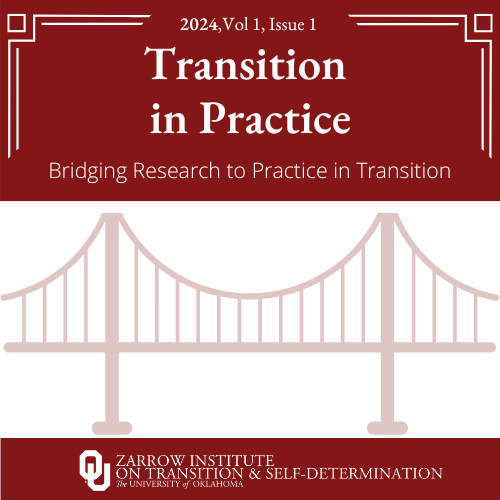Using Scripts to Strengthen Communication Skills for Vocational Tasks
Main Article Content
Abstract
Communication skills play a critical role in fostering positive post-secondary outcomes for youth with disabilities (Carter et al., 2012). Yet practitioners may have limited knowledge of strategies to strengthen learner communication skills. Scripting is an evidence-based practice for increasing communicative responses including those required for completion of vocational tasks. This article describes a step-by-step process for developing scripts to strengthen learner communication skills for completion of vocational tasks. Considerations and resources to support implementation are provided.
Article Details

This work is licensed under a Creative Commons Attribution-NonCommercial-NoDerivatives 4.0 International License.
This is an open access article distributed under the terms of the Creative Commons License 4.0, CC BY-NC-ND 4.0
References
Akers, J. S., Pyle, N., Higbee, T. S., Pyle, D., & Gerencser, K. R. (2016). A synthesis of script fading effects with individuals with autism spectrum disorder: A 20-year review. Review Journal of Autism and Developmental Disorders, 3(1), 1–17. https://doi.org/10.1007/s40489-015-0062-9
American Psychiatric Association. (2013). Diagnostic and statistical manual of mental disorders (5th ed.). https://doi.org/10.1176/appi.books.9780890425596
Brown, J. L., Krantz, P. J., McClannahan, L. E., & Poulson, C. L. (2008). Using script fading to promote natural environment stimulus control of verbal interactions among youths with autism. Research in Autism Spectrum Disorders, 2(3), 480–497. https://doi.org/10.1016/j.rasd.2007.08.006
Carter, E. W., Austin, D., & Trainor, A. A. (2012). Predictors of postschool employment outcomes for young adults with severe disabilities. Journal of Disability Policy Studies, 23(1), 50–63. https://doi.org/10.1177/1044207311414680
Dotto-Fojut, K. M., Reeve, K. F., Townsend, D. B., & Progar, P. R. (2011). Teaching adolescents with autism to describe a problem and request assistance during simulated vocational tasks. Research in Autism Spectrum Disorders, 5(2), 826–833. https://doi.org/10.1016/j.rasd.2010.09.012
Fleury, V. P. (2013). Scripting (SC) fact sheet. Chapel Hill: The University of North Carolina,
Frank Porter Graham Child Development Institute, The National Professional Development Center on Autism Spectrum Disorders.
Radley, K. C., Dart, E. H., Brennan, K. J., Helbig, K. A., Lehman, E. L., Silberman, M., & Mendanhall, K. (2020). Social skills teaching for individuals with autism spectrum disorder: a systematic review. Advances in Neurodevelopmental Disorders, 4(3), 215–226. https://doi.org/10.1007/s41252-020-00170-x
Scheibel, G., Ma, Z., & Travers, J. C. (2022). Teaching social scripts to improve social communication for students with autism spectrum disorder. TEACHING Exceptional Children, 54(5), 330–337. https://doi.org/10.1177/00400599211022023
Topuz, C., & Ulke-Kurkcuoglu, B. (2022). Script fading procedure: a systematic review and meta-analysis. Review Journal of Autism and Developmental Disorders, 9(3), 366–385. https://doi.org/10.1007/s40489-021-00258-7
Wichnick-Gillis, A. M., Vener, S. M., & Poulson, C. L. (2016). The effect of a script-fading procedure on social interactions among young children with autism. Research in Autism Spectrum Disorders, 26, 1–9. https://doi.org/10.1016/j.rasd.2016.03.004

